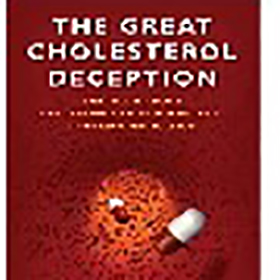
Here is another nail in the coffin of the cholesterol theory. For the last 40 years the cholesterol theory (yes theory) has continued to change to suit the growing evidence against it. In science if a theory is disproved it is tossed out. Not this one. It keeps being reborn and of course you are now told it is the oxidized LDL cholesterol. And it is. But the problem is not the cholesterol it is the oxidation which leads to inflammation. Stop the oxidation and stop the inflammation.
The study—which monitored more than 10,000 heart patients—was inspired by the observation that around half of the people who suffer a heart attack have normal cholesterol levels and that lowering cholesterol has no significant reduction in mortality. The study showed that reducing inflammation without affecting lipid (cholesterol) levels reduces the risk of cardiovascular disease.
In the study they used a drug, canakinumab, involving 10,061 patients with previous heart attack (myocardial infarction) and a high-sensitivity C-reactive protein- inflammation. At a follow-up of 3.7 years, the incidence rate for heart attacks was 4.50 percent in the placebo group, 4.11 and about 3.90 percent for the higher dose groups. In medicine this is seen as breakthrough and a 16% reduction. The need for by-pass surgery and angioplasty was also reduced by 30 per cent. Cholesterol-lowering statins have a far lower success rate.
However, Canakinumab was associated with a higher incidence of fatal infection than was placebo, that is one in every 1,000 participants suffered a fatal infection. In other words, 10 people died as a direct result of taking the drug. There was no significant difference in all-cause mortality (canakinumab vs. placebo). The cost of the drug treatment is estimated to be more than $65000 US a year.
Despite the results the take-home message is that it is not cholesterol it is inflammation, cholesterol, is associated with CVD but not the cause. The real take home message is that inflammation is best controlled through diet and lifestyle.